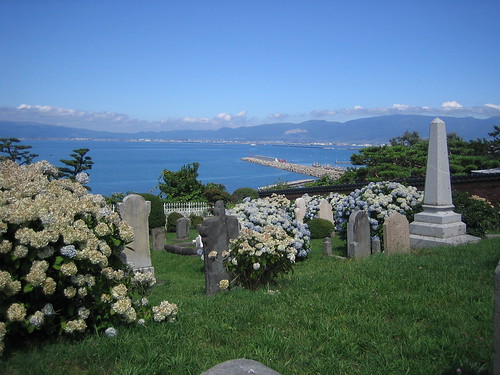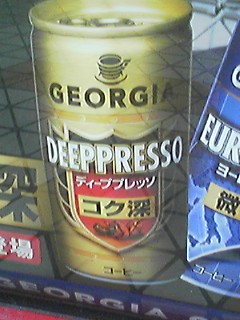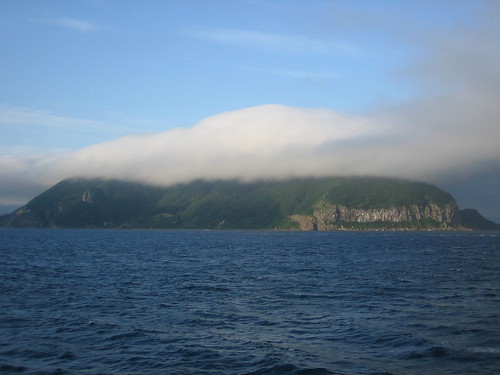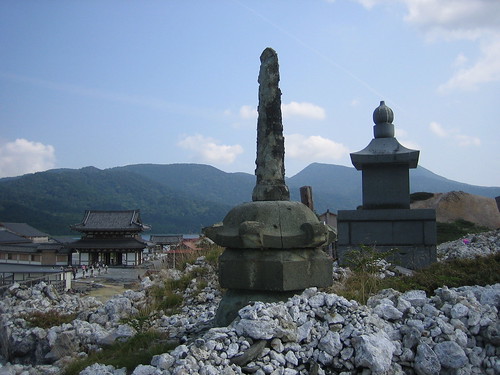Activist Debito Arudou, who has long maintained one of the most informative websites for foreigners in Japan, is now blogging the updates which he previously only sent out by e-mail. A welcome development–be sure to add him to your newsreader so you can keep up with the politics of honkiness.
Category: Japan
The worst coffee to start your morning
George Will on aging Japan
Never one to be left out of a discussion, in his latest Washington Post column, George Will addresses the problems of Japan’s aging population.
There’s little worth commenting on, no new ideas, no new analysis, another retreat of the same ground that any number of articles and columns on the topic have had. And of course, the same old mistaken assumptions.
But today almost one-third of all workers are “non-regular” (up from one-fifth in 1990) and have little security and few benefits.
I believe that would be one-third of office workers. Do the millions of people working in stores, restaurants, agriculture, factories not owned by a Toyota or Canon, or other low hourly jobs not count?
Just look at the latest Labor Force Survey of employees by industry. Do the 11,220,000 people engaged in the “wholesale and retail trade” or the 3,430,000 working in “eating and drinking places, accomodations” have so-called “lifetime employment” jobs? Did they ever? Even at the peak of the so called lifetime employment system, there were wide categories of jobs that were never included, and this is often overlooked in cursory analysis of Japan.
Another fine quote:
Japan, with its centuries of commitment to social harmony
Yes, if you consider a caste system with Samurai permanently on the top and eta permanently on the bottom a “commitment to social harmony,” then I suppose I can’t call him on this one.
Awesome real estate, wasted on dead people
After crossing to Hakodate, Curzon and I set out on our second day to find some history. After all, Hakodate was one of the first ports opened to American trade under the Treaty of Kanagawa, and has long been associated with foreigners of the Victorian variety.
Of course, they are all dead, but they still get some of the nicest property in town.

This is one of the “foreigner cemeteries” located at the south end of Hakodate, about a kilometer from the nearest tram stop. This area was set aside during the city’s treaty port days as a resting place for all the gaijin wandering around town at the time.
There are several separate plots in this area, each administered by one of the local churches. What you see above is the Protestant cemetery. Orthodox Christians are buried farther up the hill.
That pillar on the right says “Hakodate Church of Harisutosu” — Harisutosu being the Japanese transliteration of the Greek word Χριστός (Christós) or “Christ.”
And the Chinese are right next door, on a plot maintained by the local Chinese temple, carefully walled off to keep nosy foreigners from taking pictures.
While I like the idea of having my final resting place on a hill overlooking the whole city, I think it would be much cooler to actually live there. Unfortunately, looks like the corpses get to have all the fun this time.
Crossing to Hakodate
After our trip to Osorezan, Curzon and I wandered across the Shimokita Peninsula to the port of Oma, then boarded a ferry to cross the Tsugaru Strait to Hokkaido.
One of Hakodate’s most well-known features is Mount Hakodate, which rises over the south end of the city and is said to have one of the most amazing nighttime views in the world, on par with the mountain in Hong Kong.
There was a problem, though. As Hakodate came into sight, we noticed that the mountain was wearing a nice little toupee of clouds:
After dinner that evening (crabs! squids!), we decided to get on the cable car and head up the mountain. We got an incredible view of the city for about 30 seconds before it all turned into gray muck: the top of the mountain offered no view at all, just fog illuminated by floodlights.
On the other hand, I must say that Hakodate’s cable cars are an awesome mode of transportation: now I want to build a line between the Mori Tower and the Izumi Garden in Tokyo. I’m sure Curzon will volunteer a photo (as I forgot my camera for the trip up the mountain).
“Hell on Earth” … well, not quite
Osorezan! “The Mountain of Fear.” Ain’t it quaint. It was the first stop on my recent tour of northern Japan with Curzon (who’s still wandering around the back roads of Hokkaido).
Although some misguided websites call it a mountain, it’s actually a temple in a valley surrounded by mountains. The temple is surrounded by rocky terrain lying atop a very sulfuric hot spring, which releases smelly gas from vents in the ground.
When pre-modern types saw this, they assumed that they were seeing spirits escaping the underworld. So legend has it that this is a natural gateway to Hell, and many pilgrims come to leave little offerings for the dead. One common sight around the hot springs is little stone statues dressed in children’s clothes–memorials to dead young’uns.
Anyway, if this is what going to Hell looks like, maybe I need to maintain my life of evil…
Mixi headed for IPO
Mixi, the 5 million-strong Japanese social networking service, is getting ready to go public with an IPO on the Tokyo Stock Exchange. Mixi expects to get ¥6.9 billion from the deal, about 7 years’ profits at the current rate.
In case you haven’t tried it, it’s a mighty fine service. While it has the usual features–you can make a profile and leave comments about others–its real strength is in its communities and their message boards, and there’s one (or more) for just about anything imaginable. Kind of like Orkut meets Yahoo Answers. The diaries are also pretty popular, although I tend to avoid them because they’re just not that interesting.
We thought GREE was cool as hell a year and a half ago, and now we just look at it and laugh at its lameness.
New hanko, meet old public sector
One investment I might make soon is one of these new security hanko gadgets.
A hanko, for the uninitiated out there, is a personal seal that serves as your signature for most official purposes in Japan. It looks cool, but suffers from a major drawback: it’s very easy to forge. A person can get a color photocopy of your seal impression, or just take your hanko and seal all sorts of stuff in your name. Like, say, a divorce agreement. That wouldn’t be fun.
So Uniball’s new hanko uses a special security feature: you dial in a two-digit combination, which changes a pattern of marks surrounding your name. Unless a person knows the proper combination, they can’t get the seal to duplicate your registered seal impression.
But, according to Mobile Ojisan:
Mitsubishi Pencil recommends Dial Bank Hanko only for bank use. Some local government outright refuses to register this metal hanko as one’s personal seal.
Brilliant. Now I could protect myself from seal thieves, if only some mildly retarded guy at city hall wasn’t making up rules. “No, no no, your seal has to be ivory.”
Ishihara: “Grow some balls and stop hitting on robots”
That’s the gist of his latest interview. Maybe he just wanted to make the otaku cry.
If you go out in the world, it’s filled with sensitivity, and it’s much more interesting. For example, there is no fun in seducing a female robot who only acts in a certain way. But it’s fun to seduce a human, because you can only predict, but not know what will really happen. When it comes to seducing, it is fun to think how you can successfully reach the heart of the target.
Lest you be misled, he still knows where Japan’s strengths lie:
My plan for the Olympics is to fully utilize robot and computer technology. For example, it wouldn’t be too bad of an idea to have Astro Boy fly with the Olympic torch.
Google: Not for Japan
A while back I noted the superiority of Yahoo over Google for mapping Japan. Nowadays, I find that I have to keep both Google and Yahoo Japan as home pages because there are a lot of things that Google hasn’t yet figured out how to do. For instance:
- Very few of Google’s products interface well with Japanese mobile phones. Take Google Calendar. It can only send alerts to Gmail, or to a U.S. mobile phone by SMS. Yahoo, on the other hand, can send alerts to any e-mail address, including my phone’s (both the English and Japanese versions of Yahoo are capable of this). Yes, Google Calendar is shinier-looking, and the ability to automatically pull events from e-mails is pretty cool, but how hard can it be to broaden the e-mail alert function?
- Also, maybe it’s just my phone, but Gmail and other mobile Google sites almost never display properly on it–they either get moji-baked or they fail to load entirely.
- I keep Tokyo weather on my Google home page, and half of the time, it’s totally wrong–i.e., the system doesn’t know whether it’s day or night, or thinks that it’s 100°F outside when it’s really 80°.
- Google Finance, Google News, etc. are incapable of telling me how the Nikkei is doing. Granted, this is a two-way problem, as I can’t see the Dow on Yahoo Japan either–in fact, the only website I know that can seamlessly provide both is good ol’ Bloomberg. (Love you guys!)
I know Google is busy saving the world and all that, but can’t they save the world for people outside the U.S., too? Sheesh, guys, get off your high hammocks and get with the picture.





